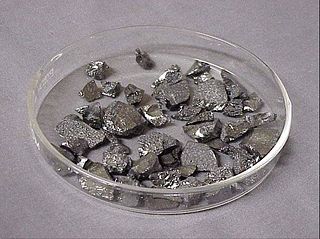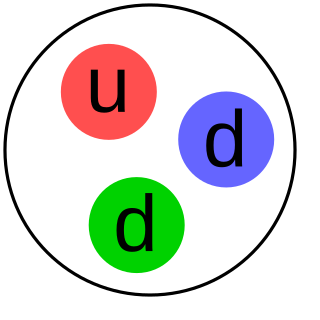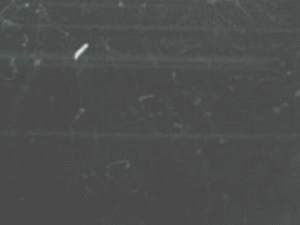This article needs additional citations for verification .(July 2014) (Learn how and when to remove this template message) |
Borophosphosilicate glass, commonly known as BPSG, is a type of silicate glass that includes additives of both boron and phosphorus. Silicate glasses such as PSG and borophosphosilicate glass are commonly used in semiconductor device fabrication for intermetal layers, i.e., insulating layers deposited between succeedingly higher metal or conducting layers.

Boron is a chemical element with symbol B and atomic number 5. Produced entirely by cosmic ray spallation and supernovae and not by stellar nucleosynthesis, it is a low-abundance element in the Solar system and in the Earth's crust. Boron is concentrated on Earth by the water-solubility of its more common naturally occurring compounds, the borate minerals. These are mined industrially as evaporites, such as borax and kernite. The largest known boron deposits are in Turkey, the largest producer of boron minerals.

Phosphorus is a chemical element with symbol P and atomic number 15. Elemental phosphorus exists in two major forms, white phosphorus and red phosphorus, but because it is highly reactive, phosphorus is never found as a free element on Earth. It has a concentration in the Earth's crust of about one gram per kilogram. With few exceptions, minerals containing phosphorus are in the maximally oxidized state as inorganic phosphate rocks.
Phosphosilicate glass, commonly referred to by the acronym PSG, is a silicate glass commonly used in semiconductor device fabrication for intermetal layers, i.e., insulating layers deposited between succeedingly higher metal or conducting layers, due to its effect in gettering alkali ions. Another common species of phosphosilicate glass is borophosphosilicate glass (BPSG).
BPSG has been implicated in increasing a device's susceptibility to soft errors since the boron-10 isotope is good at capturing thermal neutrons from cosmic radiation. [1] [2] It then undergoes fission producing a gamma ray, an alpha particle, and a lithium ion. These products may then dump charge into nearby structures, causing data loss (bit flipping, or single event upset).
In electronics and computing, a soft error is a type of error where a signal or datum is wrong. Errors may be caused by a defect, usually understood either to be a mistake in design or construction, or a broken component. A soft error is also a signal or datum which is wrong, but is not assumed to imply such a mistake or breakage. After observing a soft error, there is no implication that the system is any less reliable than before. In the spacecraft industry this kind of error is called a single event upset.

In nuclear physics and nuclear chemistry, nuclear fission is a nuclear reaction or a radioactive decay process in which the nucleus of an atom splits into smaller, lighter nuclei. The fission process often produces free neutrons and gamma photons, and releases a very large amount of energy even by the energetic standards of radioactive decay.

A gamma ray or gamma radiation, is a penetrating electromagnetic radiation arising from the radioactive decay of atomic nuclei. It consists of the shortest wavelength electromagnetic waves and so imparts the highest photon energy. Paul Villard, a French chemist and physicist, discovered gamma radiation in 1900 while studying radiation emitted by radium. In 1903, Ernest Rutherford named this radiation gamma rays based on their relatively strong penetration of matter; he had previously discovered two less penetrating types of decay radiation, which he named alpha rays and beta rays in ascending order of penetrating power.
In critical designs, depleted boron consisting almost entirely of boron-11 is used to avoid this effect as a radiation hardening measure. Boron-11 is a by-product of the nuclear industry.
Radiation hardening is the act of making electronic components and systems resistant to damage or malfunctions caused by ionizing radiation, such as those encountered in outer space and high-altitude flight, around nuclear reactors and particle accelerators, or during nuclear accidents or nuclear warfare.

Nuclear power is the use of nuclear reactions that release nuclear energy to generate heat, which most frequently is then used in steam turbines to produce electricity in a nuclear power plant. As a nuclear technology, nuclear power can be obtained from nuclear fission, nuclear decay and nuclear fusion reactions. Presently, the vast majority of electricity from nuclear power is produced by nuclear fission of uranium and plutonium. Nuclear decay processes are used in niche applications such as radioisotope thermoelectric generators. Generating electricity from fusion power remains at the focus of international research. This article mostly deals with nuclear fission power for electricity generation.







